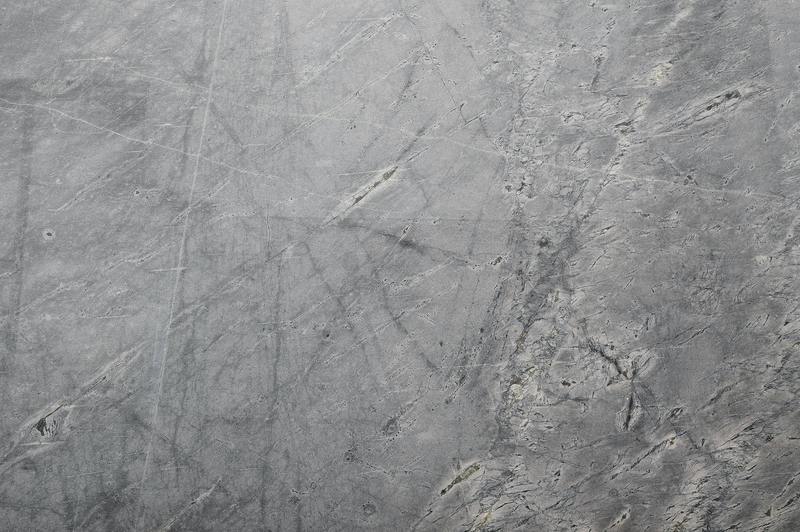In this article, you will learn how to clean mold off concrete floor using a scrub brush and a cleaning agent. Apart from that, we will also inform you how to detect decay on concrete floors and how they form. So, read until the end!

Mold On Concrete Floors
The first thing you may have asked yourself upon seeing growth on your concrete floor is, “Is it mold?” It’s understandable since mineral build-up sometimes looks like mold. The next part of this article will help you detect mold and understand its causes.
How to detect mold on concrete floors?
Not everything white is immediately mold. As mentioned above, you may mistake it for efflorescence.
However, growth on concrete floors that are of green, brown, or black is highly likely to be mold. Black mold on your flooring is identified as black spots that form circular patterns. Not all black mold is toxic, but there is a type of black mold that is harmful.
You may mistake green mold for algae growth. You can remove them the same way as other types of mold. Do not touch it with bare hands to determine whether it is algae or mold.
How do concrete floors acquire mold?
Mold growth on concrete is due to several different reasons. However, its leading cause is water damage. Water damage may be due to improper drainage or a sump pump.
Another reason is high levels of humidity. When the cold season comes, condensation is common in homes. Such a phenomenon gives mold a perfect environment to grow in.
Steps On Cleaning Mold From Concrete Floors
The next step after detecting mold and assessing if it is manageable is to clean it. Here are the steps in disinfecting mold-affected concrete floors:
Step #1. Choose a disinfecting agent
Several cleaning agents can be used to kill mold on concrete. You can use diluted bleach, white vinegar, mold-killing commercial cleaner, or detergent.
Protect yourself while you clean off mold from your concrete flooring. Then, do a spot test on whichever disinfecting agent you choose.
If you choose bleach, combine bleach and water in a 1:3 ratio in a bucket. If you pick white vinegar, fill a spray bottle with pure white vinegar. For commercial cleaners, follow the instructions.
Step #2. Remove items
Clear away the affected area to properly clean the mold-contaminated concrete floors.
Step #3. Solution
Use a heavy-duty scrub brush with your cleaning solution. Then, buff the affected places with visible mold.
With mold-killing detergent, it is better to apply it directly on mold-contaminated areas. Then, scrub the pot with a bristle brush. Never use a wired brush because it will result in scratches on your concrete.
After scrubbing, leave the solution on the floor for several minutes. Continue to buff the affected spots until you remove the visible mold.
Step #4. Dry
Wipe the floor down with a clean towel until it is dry. Then, do another inspection to see if there is still mold present.
Step #5. Place the items back
Mold spreads quickly, so clean any mold-affected items before you place them back on the flooring. If your furniture has been affected, this article tackles mold removal on furniture fabric. It might help you deal with the mold.
How much is professional mold removal?
If the mold damage is extensive, asking a professional for help is the logical thing to do. Professional mold removal generally costs $2,325. Most homeowners spend $15 to $30 per mold-affected square foot of the flooring.
How long does professional mold removal take?
The amount of time mold removal takes depends on the type of mold the professional is dealing with. Along with the type of mold is the place where the mold contamination is located.
Since concrete floors are accessible, they do not take as much time as mold clean-up in attics. It may even take less than a day.
Tips in keeping concrete floors mold-free
After removing mold from your concrete floors, ensure that they do not acquire mold again. Here are some tips:
1. Increase the room temperature
Cold rooms produce moisture, which mold feeds on. A humid-rich environment is a perfect place for mold to grow.
As a solution, keep the room temperature warm. Here is an article talking about the temperature where mold dies for your reference.
2. Improve airflow
A stuffy house invites mold spores to settle on your belongings. Encouraging airflow in your home will prevent mold spores from finding moisture-trapped places in your house to thrive.
3. Maintain humidity levels
Humidity levels are not challenging to maintain as long as you have a working dehumidifier. However, it is not advised to fully rely on your humidifiers.
This is because they require a significant amount of electricity. Alternate between using a dehumidifier and using natural ventilation practices to keep your indoor air fresh.
Conclusion
It is essential to learn how to clean mold off concrete floor so it won’t lead to health problems. Hopefully, this article on mold growth on concrete flooring was of help.
